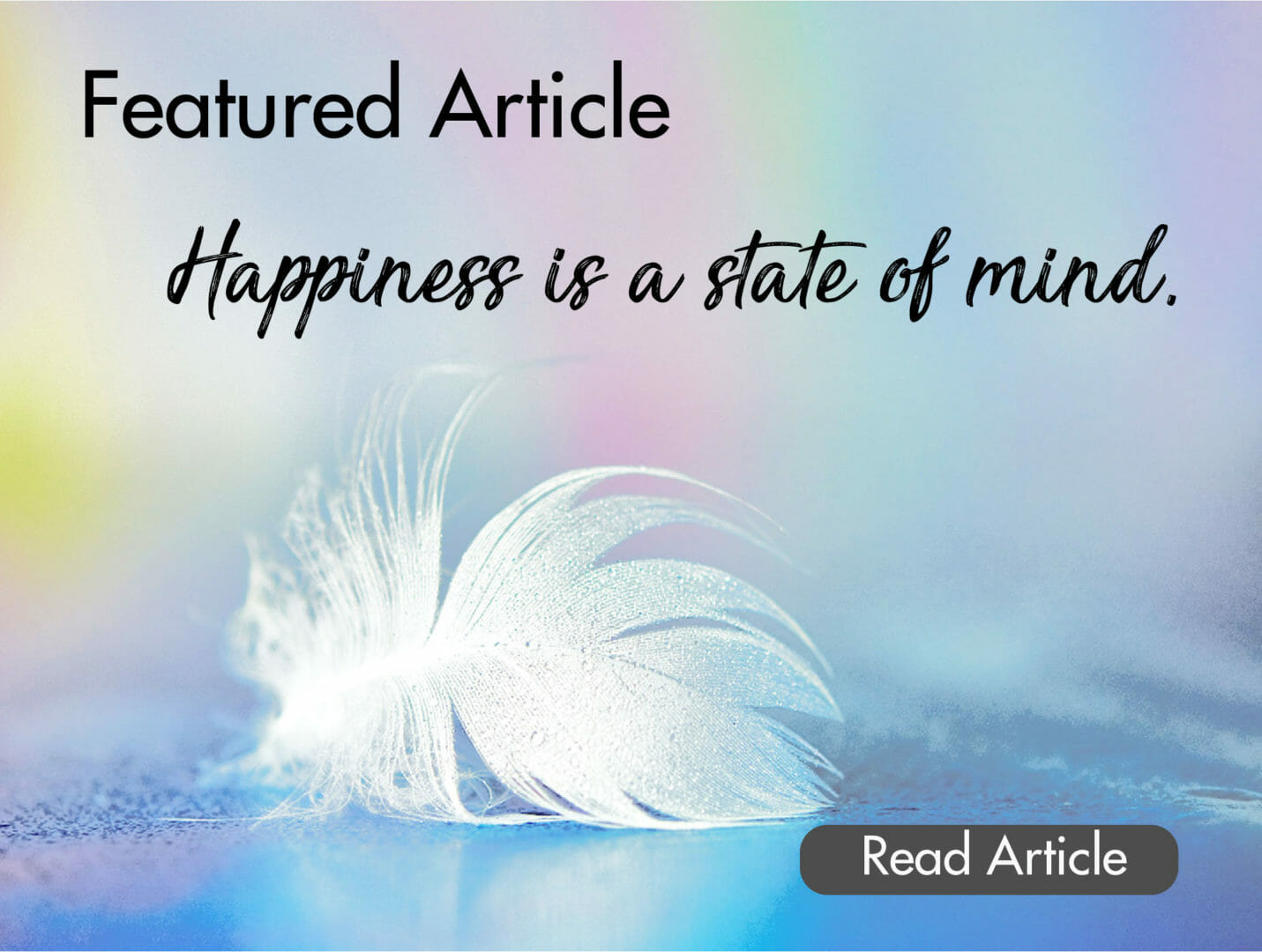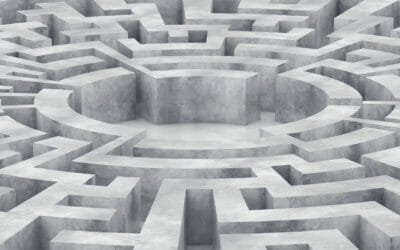Meditation and Psychiatry:
My Two Practices
Guest Article
Someone has said that life is like driving up a solitary road on a dark night: You can see only a few yards ahead with your headlights, but you keep driving until you reach your destination, or the end of the road, whichever comes first.
And I would add to this metaphor that it really makes all the difference if you are not on a dead-end road, and that it is the right road for you, one that will lead you to your destination!
If you are reading this, you are driving that road, hoping and searching for something in your life, something beyond the common and the ordinary, a higher goal beyond the daily grind. You may call it lasting happiness, or inner peace, or higher knowledge, or contentment, or love, or truth, or you may not even have a name for it.
If this little story can save one reader years of chasing up the same dead-end roads of the world I did, and if we can tell it with good humor, it will be fun and worthwhile doing. So, to start:
Like so many teenagers, I contemplated life’s important questions: Who are we? Where are we all going? And by the way, Where did we all come from? Finally, What’s it all about anyway?
But even in adulthood, while others stopped asking questions and just got on with their practical lives in the world, I was still searching for something. What it was or where it could be found, I did not know—something to do with finding happiness. With the human mind. And also something deeper, the human heart. And like most searchers, I naturally assumed that whatever I was seeking must be Out There.
So out I went. First to college to study the usual. In psychology, Freud—hard to read, but seemed an unhappy fellow; Skinner—white rats, hard to tell if they were happy; Jung–somewhat vague. No joy. In philosophy class, the many men (sorry, it was almost all men in the day) prescribed as the Greats had no satisfactory answers, but possibly I was a bit dull and had missed them.
One of the obscure Greats, Saint Bonaventure, did seem to have been having a wonderful time in the 13th century. He said, “The way to true happiness is rising above ourselves.” But we were all on our way to professional school, so were warned to keep away from the mystics.
In medical school, more dead-end roads, but interesting ones. Sitting in anatomy lab for a semester with fifty corpses gave one pause. Then, our first pathology case: a girl of seventeen who stood up in her high school math class, gave a little cry and died instantly. Seeing her flawless body on the table was puzzling (also a little embarrassing to us 20-year-olds); she was much too young and healthy to die suddenly.
The pathology resident was unfazed: on dissection, we would find a burst aortic aneurism. We searched, no aneurism. Well then, keep dissecting and we would find a cerebral aneurism. No. Well, then it must be—etc., etc. We never did find a physical cause for her death, totally confounding what we were being taught, that life was based on physical functions. The pathologist moved to Alaska to practice and became rich.
After finishing preclinical courses, med students rotate through the various services to see where their affinities lie so that they can choose their specialty. Surgery (sleepless nights of ambulance sirens), no affinity for me. Ditto obstetrics, pediatrics, and internal medicine: no affinity.
But discussions of the human mind with relaxed, pipe-smoking psychiatrists in book-lined offices far above the wailing sirens—this was more like it. One afternoon, walking together across the hospital lawn, the head psychiatrist recruited me: “You know, Doctor,” —for some reason, medical students were addressed as Doctor—“you’re smarter than you look.” Was that even a compliment? “And you could do a lot worse than to spend the rest of your professional life helping beautiful patients understand themselves.” We all knew he was the psychoanalyst of a glamorous movie star. I felt a strong surge of affinity.
Psychiatry residency was more dead ends. Up close, the noted psychiatric thinkers of the day had feet of clay. So perhaps the researchers working next door in the gleaming new labs had the answers? The top brain researcher breathlessly announced to a waiting world that he had found the source of human consciousness!; It was in the brain, in the reticular formation. He hadn’t, and it wasn’t.
These disappointments began to weigh on my morale: maybe no one really understood the human heart in all its breadth, depths, and potential heights.
Or maybe these disappointments were only the lowest rungs on a ladder to happiness and self-knowledge? Or maybe if . . .
War disturbed these musings. The Air Force Medical Corps ordered two years of duty treating medically transported patients at a hospital east of Saigon. I packed some cartons with two years worth of new books, including by chance a few on yoga, meditation, and spirituality—topics I knew nothing about and was not particularly interested in.
Spiritual awakening can happen abruptly and in unlikely circumstances. Mine took place on a Friday afternoon, at an enormous airbase in the Western Pacific, while in line with hundreds of airmen waiting to pick up our weekly military pay. To pass the time, I was reading some book about love, perhaps selfless love, or even divine love (never since have I been able to locate the exact quote). Suddenly, without warning, something in me snapped, melted and poured out, the unspoken question that had been untouched and unanswered for my whole life—and right there, in the middle of that crowd of very puzzled airmen, the base psychiatrist burst into tears and could not stop crying.
I would like to say here, “From that moment, I took up meditation, pursued my spiritual goals, and never looked back.” Nah. Yet something inside me had opened up, and for the next few years, I was aware of an itch deep in the back of my brain that never left me. Also, it was beginning to dawn on me that what I was seeking wasn’t Out There at all, it was somewhere inside me, like those unexpected tears, waiting.
Meanwhile, in the USA, thanks in part to the Beatles, meditation had become very fashionable. Many were experimenting with different kinds of yoga.
I dipped a toe into many of the fads. The first time I tried meditation, following directions from a book, it made me giddy, so I did not try again for many months. Later, with rough instructions from my fiancée (she is now my wife of 44 years), the giddiness disappeared, and I persisted, meditating daily.
Some friends invited me to drive them to where a meditation teacher was giving programs. What was so special about this man? How is he any different from all the other so-called gurus crisscrossing the country? I asked.
Oh, he can make a thousand people happy at one time, they said. No, he can’t. I’m a psychiatrist, and you can’t even make one person happy, much less one thousand. They insisted, Just come and see for yourself, he can do it!
I did, and he could.
The teacher (Kirpal Singh) taught us how to meditate accurately, but then he gave us some firsthand inner experiences of what lay ahead if we continued to practice. Joy, happiness, amazement, bliss, beauty—words cannot begin to describe these experiences, which were beyond words, beyond the mundane world I had been inhabiting, and way, way beyond my fondest hopes.
I’ve been practicing meditation regularly now for several decades, and I would no more leave my house without finishing daily meditation than I would leave without wearing clothes.
So the question many people ask me about my two practices (psychiatry and meditation) is, How have I reconciled the two in my own life? How could I, as a medical scientist, practice modern psychiatry and also practice meditation—a primarily subjective, transcendent, even mystical undertaking—both privately and professionally? My answer these days is, “What I was looking for in psychiatry, I finally found in meditation. And I honestly believe meditation will be the future of psychiatry.”
It is however true that until recently, psychiatrists as a group tended not to be too open to meditation, which smacked too much of religiosity—or maybe worse. I remember with a smile an event that occurred some years back: Two meetings were going on concurrently at a local hotel, one about meditation, the other a psychiatric conference. “I didn’t see you in the psych conference,” a colleague said to me when we met in the lobby during a break.
“No, I wasn’t in the psych conference; I was in the meditation meeting,” I explained. He seemed shocked (this was 30+ years ago, remember), and didn’t hide his scorn: “You mean to say you actually…MEDITATE? You sit there for 20 minutes and DO NOTHING? But that’s, that’s”—here, words failed him, then he blurted, “But that’s UNAMERICAN!”
A product of late 18th century Enlightenment, psychiatry came on the scene when belief in dualism—that the soul or consciousness was separable from the physical body—was still widespread. Mental symptoms inspired fear and superstition, and people suffering from severe psychiatric illness were commonly subjected to shackles, trepanation, etc. Psychiatry promised a more humane, secular, and scientific approach to these illnesses.
The profession took a sharp turn away from spiritual and religious approaches in the 19th century when a medical man (Antone Mesmer) and a priest engaged in a public contest to cure the same patient. The medical approach won out, and there followed two centuries of bias in psychiatry against being too concerned with patients’ spiritual and religious concerns—which were considered to be problematic or, at best, irrelevant.
Today, thankfully, psychiatry as a profession seems to be swinging back towards the view that treatment of psychiatric illness needs to address the patient’s deepest mental, emotional, and also spiritual needs.
These days, many psychiatrists have themselves tried meditation, and when I give meditation workshops to audiences of psychiatrists, the room is usually full. Many psychiatrists who may not yet grasp the spiritual significance of meditation are nonetheless coming to appreciate the health benefits of this practice. (I even spotted my friend who called me UNAMERICAN! sitting in the back row at a meditation workshop.)
In my own practice, I have seen how practicing meditation can help patients with severe psychiatric symptoms. As you learn to meditate and quiet the everyday mental chatter, you start experiencing firsthand your mind constantly working to annoy, mislead, and ultimately defeat your best intentions. What better method could there be for training psychiatrists and treating psychiatric patients?
One story from my own experience: A woman came to the podium after a meditation workshop in southern California some years ago and told me that about two years earlier, she had developed a severe phobia, or fear, of flying. She became so frightened before flying that she would have to stop at the airport cocktail lounge and drink herself into near-insensibility in order to be able to board her flight.
She sought treatment for her phobic symptoms with a psychotherapist, with medications, and with yoga and relaxation exercises, but nothing solved the problem completely, she said.
Finally, she started meditating, using a simple method of concentrating the attention while relaxing the body. By meditating daily, she said, she gradually began to relax both her mental and physical tension, and after a year or so the fear of flying disappeared.
She is a flight attendant.
Not only did meditation spare her the misery of a painful mental disorder, it also saved her career.
As more psychiatrists see the salutary effects of meditation on our patients’ mental health, and as more psychiatrists begin to practice meditation themselves and experience its insights and benefits firsthand, it is to be hoped that long-held prejudices and narrow points of view will give way.
The psychiatry of the future will acknowledge the centrality of meditation and spirituality in any comprehensive approach to healing mental and emotional disorders. The word psychiatry actually means “treating the soul [consciousness or attention],” and meditation, done regularly and accurately, fills that role exactly.
Meditation opens a unique window into the functioning of the mind. By reducing stress levels, emotional reactivity, anxiety, and depression, meditation is not only a complement to other therapies, it is the holy grail of mental hygiene we psychiatrists have been seeking for 50 years. Meditation is in fact, the practical key to preventing mental illness by accessing the source of everything, the healing unity deep within the human heart.
Or, as my own teacher Kirpal Singh said succinctly, “On the health of the soul depends the health of mind and body both.”
Guest Author Articles
Death and the Beyond
As a geriatric physician, Dr. Raider frequently deals with patients who are reaching the end of their lives. He shares insights learned that go beyond standard medical training.
Crisis Presents Opportunity
How can we confront the effect of the global crises that make life challenging and cause turmoil in our lives? Dr. Post explores a valuable opportunity that presents itself in the face of current crises.
Getting Hold of Your Thoughts
How can you control your thoughts instead of letting stress and worry control you? Dr. Young has answers that work.
Latest Articles by
Sant Rajinder Singh Ji Maharaj
Serving God’s Creation
Many only want to serve God directly. We do not realize that it is also God’s work to serve God’s creation. Each day, life presents us with opportunities to help others.
Spiritual Spring Cleaning
When we focus on examining our thoughts, we need to evaluate what aspects of ourselves we want to cleanse. We need to understand what is cluttering our minds and hearts and keeping us from opening up to God’s love.
A Healthy Attitude to Failure
As we sit for meditation and prayer we should not be discouraged. We should do our part to meditate accurately, and leave the rest to God. Then one day we will find that all our efforts have borne fruit.





















